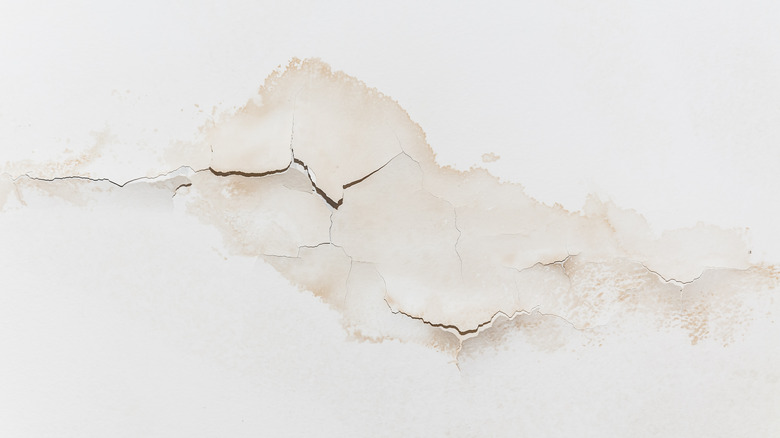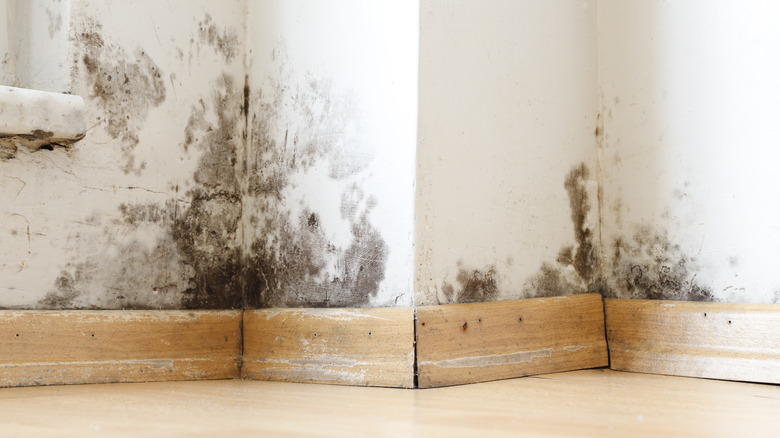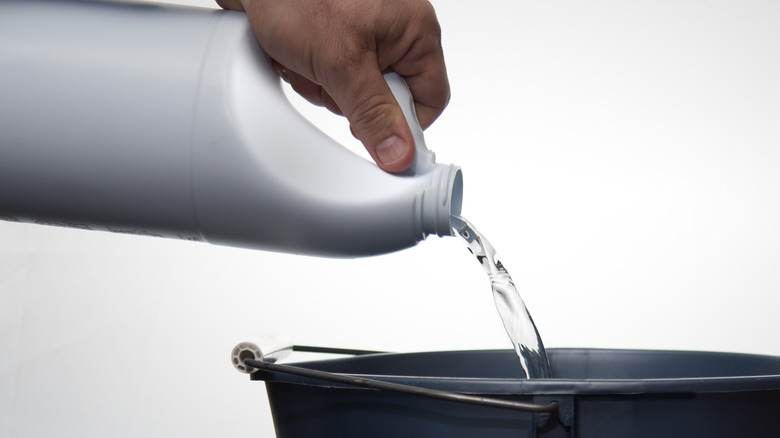How To Keep Dangerous Mold Away When There's Water Damage On Your Walls
Water damage is an awful ordeal, and unfortunately, there are many ways our home can suffer from it. Sometimes, it's as simple and preventable as poor roofing or water leaks. Other times, it's the result of unavoidable floods or hurricanes. Regardless of how water damaged your home, it's imperative that you act quickly.
Water can warp and damage the integrity of your entire home, from the walls and floors to vital structural elements. However, one of the bigger threats is mold growth. Mold sets in very quickly after water damage and exposure to it can have adverse effects on your health. The United States Environmental Protection Agency reports that those with asthma or allergies are most likely to be affected by mold exposure, with symptoms similar to a common cold or hay fever — sneezing, red eyes, dermatitis, and runny noses, to name a few. As such, if your home experiences water damage there are several things you can do to keep mold from growing.
Remove as much water as possible
Mold can grow within as little as 24 hours, depending on the severity of the damage, so the first thing you should do is remove as much water and moisture as possible. Use buckets and bins to remove any standing water, open up windows, and turn on fans to ventilate where you can. Renting wet vacuums can be helpful for removing water in hard-to-reach areas.
If you have any rugs, immediately remove them and either try to air dry them or toss them if they've sustained extensive water damage. More permanent flooring, like carpets or porous tiles, is a bit trickier. If the water damage is severe enough, you may have to remove the flooring entirely. Wooden floors should be lifted to allow the space underneath to air out. While this may be time-consuming and costly, it's better than dealing with a severe mold issue down the road.
Use bleach
Your next course of action should be removing any furniture items from your home that have been affected by the water damage. You can try to remove the water and get ahead of the mold with mold removers, but this may damage fabric items like couches or chairs. If you notice your furniture discoloring, changing texture, or taking on a smell, it may need to be replaced altogether.
Once everything affected by the water damage has been taken out of the room, you have a more controlled setting to remove moisture in the structure that could turn into mold. Don't just focus on reducing humidity, but temperatures, too. Heavy-duty dehumidifiers can do both at once. Finally, once you've removed as much moisture and water as possible, you should use a disinfectant to prevent mold spores from developing and any developed spores from spreading. There are plenty of options for this, like chlorine bleach or other biocides. However, they will only be effective if all the moisture has been removed first.


